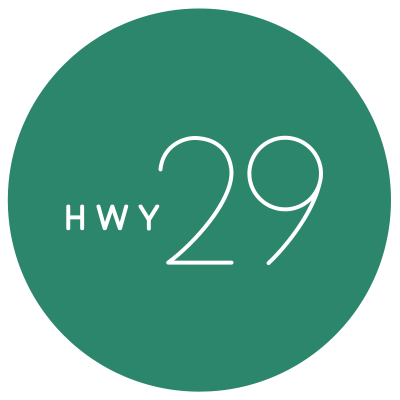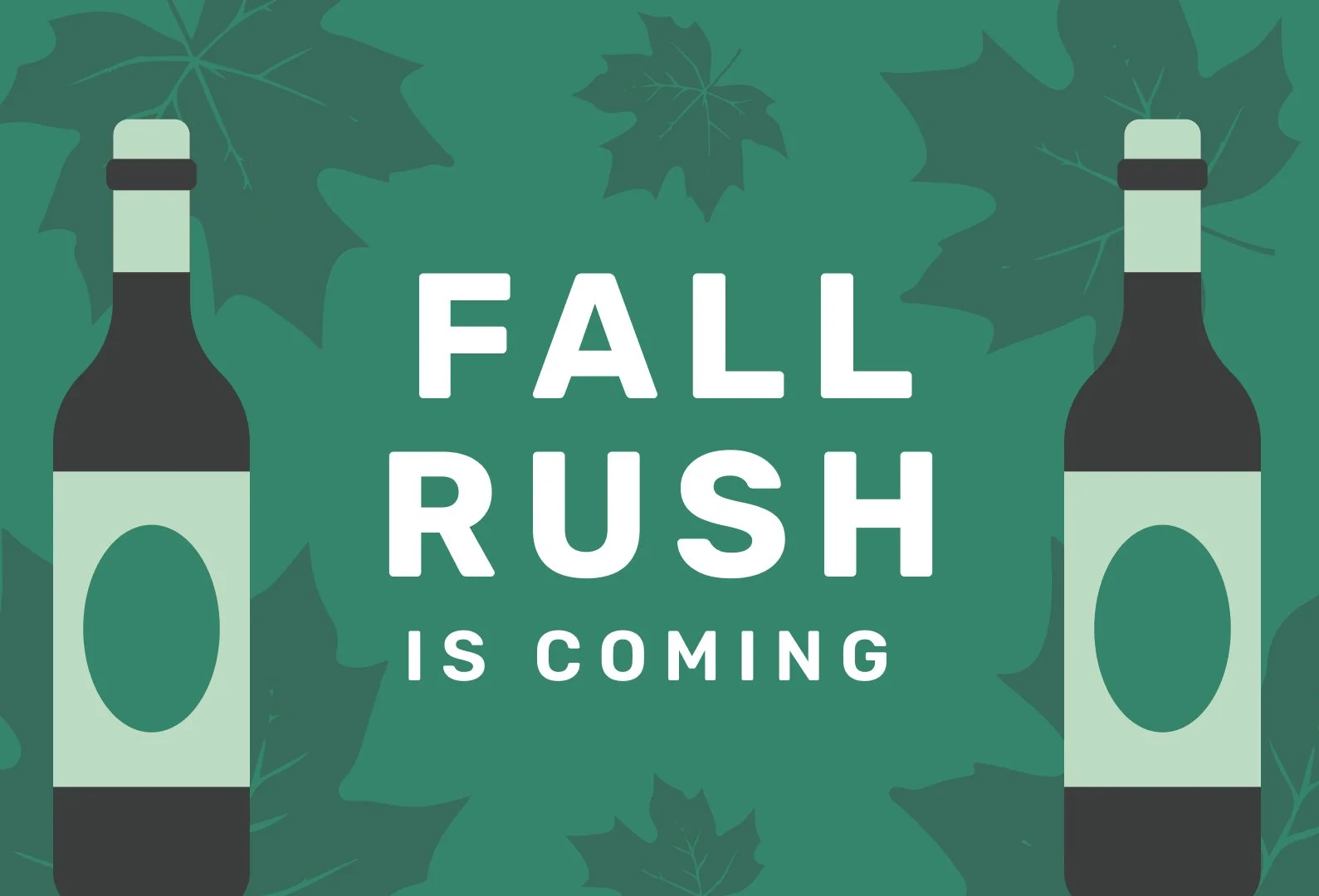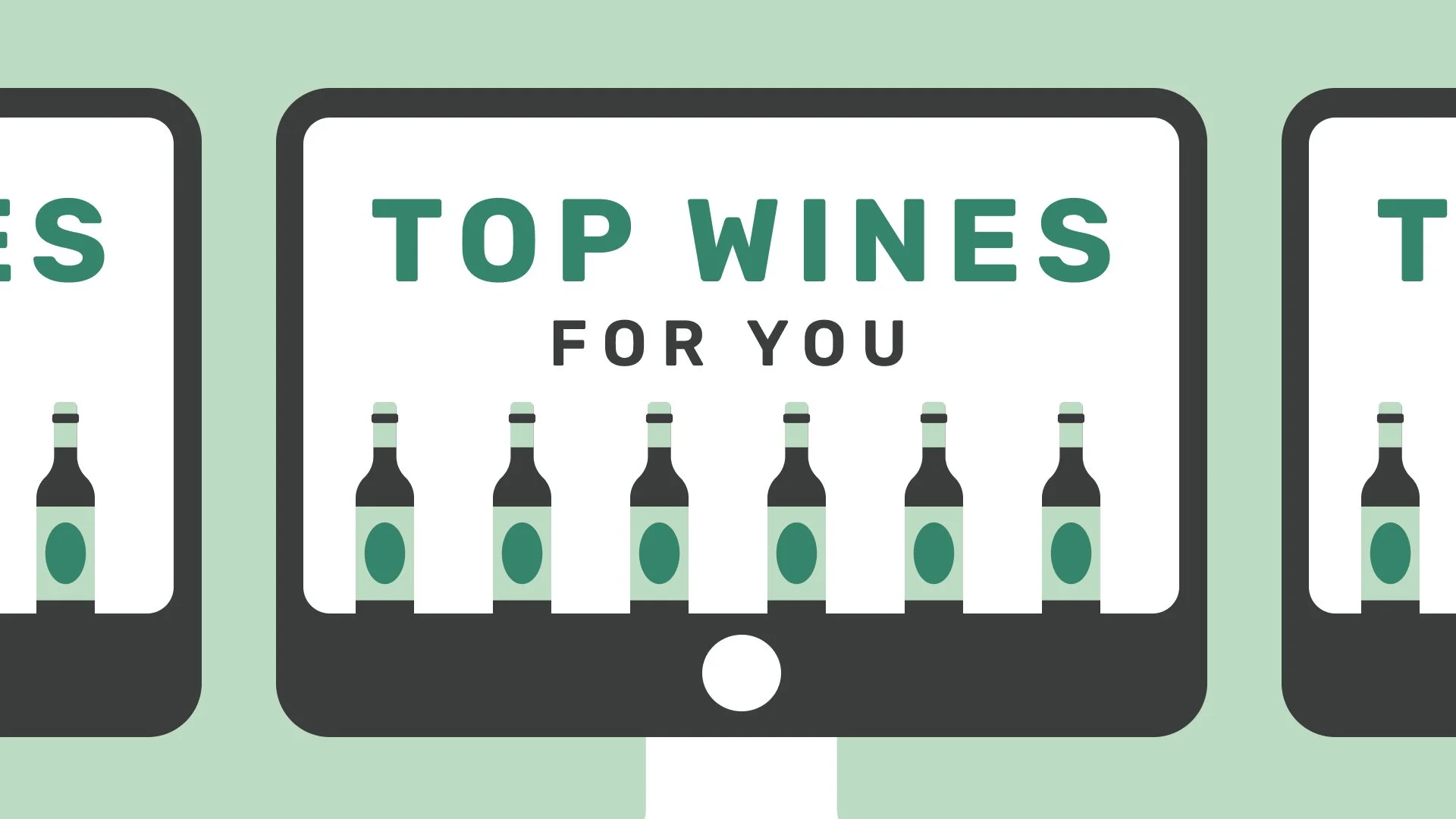Maximizing DTC Wine Sales This Fall: Preparing for Holiday Demand
The Fall Rush Is Coming. Most Wineries Aren't Ready.
If your winery operates like most, you're currently focused on harvest operations while your marketing plans for the biggest sales period of the year remain nebulous at best.
According to Silicon Valley Bank's 2024 Direct-to-Consumer Wine Survey, the fourth quarter accounts for approximately 35% of annual DTC revenue for most wineries, with December alone representing nearly 20% of yearly sales. The foundations you lay in September and October directly determine your November and December results.
While your competitors scramble to cobble together last-minute holiday promotions in mid-November, the wineries that capture the largest share of holiday spending are already implementing strategic plans right now.
This isn't just about slapping a "gift guide" on your website the week before Thanksgiving. It's about creating a comprehensive approach that positions your wines as the obvious gift choice long before consumers finalize their holiday shopping lists.
Start Where the Customer Starts: Your Online Store
Before launching a single holiday promotion, audit your digital storefront through the eyes of a gift buyer rather than a wine enthusiast.
What Gift Shoppers Need (That Wine Enthusiasts Don't)
Gift buyers shop fundamentally differently from your regular customers:
They often know less about wine
They're more sensitive to presentation
They're more likely to be on mobile devices
They make decisions faster
They respond strongly to curation and guidance
The hotel industry has mastered this difference. Compare how differently Marriott markets to business travelers versus vacation planners. The vacation pages emphasize packages, experiences, and visual appeal, while business pages focus on amenities, rewards, and efficiency.
Your winery website needs this same dual approach during the holiday season.
Three Critical Website Updates to Make Now
1. Create dedicated gift landing pages
Don't force gift shoppers to navigate your standard wine shop. Create dedicated pages with titles like "Wine Gifts Under $100" or "Perfect Wines for Thanksgiving Hosts" that speak directly to their needs.
These pages should feature:
Clear price tiers
Gift-oriented photography (wrapped bottles, festive settings)
Simplified wine descriptions (focus on occasion, not technical details)
One-click add-to-cart functionality
2. Implement gift bundles and sets
Cosmetics retailer Sephora sees higher conversion rates on pre-bundled gift sets versus individual products. The same psychology applies to wine.
Effective wine bundles include:
Thematic collections ("Winter Reds," "Holiday Entertaining Set")
Vertical tastings of a single wine across vintages
Progressive experiences ("From Light to Bold Reds")
Food pairing collections ("Complete Thanksgiving Table")
3. Optimize mobile gift shopping
Gift research happens in micro-moments: during commutes, lunch breaks, or while watching TV. Google reports that most holiday shoppers use mobile devices for gift research before making purchases.
Mobile gift buying necessitates:
One-page checkout
Saved shipping addresses
Mobile payment options (Apple Pay, Google Pay)
Text-based order confirmations
Learn more about creating a mobile-friendly website that converts visitors into customers
The Four-Phase Holiday Email Strategy Smart Wineries Use
Email remains the highest-converting channel for DTC wine sales. But timing is everything.
Most wineries make the mistake of waiting until late November to begin holiday messaging. By then, many consumers have already mentally allocated their gift budgets.
Instead, implement this four-phase approach:
Phase 1: Early Awareness (Late September/Early October)
Content: Harvest updates that subtly mention upcoming holiday offerings
Subject line example: "Behind the scenes of the wines you'll share this holiday season"
Call-to-action: None yet, just planting seeds
Phase 2: Gift Planning (Mid-October to Early November)
Content: Gift guides, curated collections, "wines worth sharing"
Subject line example: "The only gift guide you'll need this season"
Call-to-action: "Preview our holiday collection"
Phase 3: Early Purchase Incentives (Early to Mid-November)
Content: Limited-time offers, early access, guaranteed delivery
Subject line example: "Order by Nov 15 for guaranteed Thanksgiving delivery + 15% off"
Call-to-action: "Shop now and save"
Phase 4: Last-Minute Solutions (December)
Content: Shipping deadlines, digital gift cards, local pickup options
Subject line example: "Still need a perfect gift? We've got perfection ready-to-go"
Call-to-action: "Last-minute gift solutions"
Meal kit company Blue Apron uses this phased approach for their holiday marketing, beginning with Thanksgiving recipe previews in early October before transitioning to holiday meal kit promotions by mid-October, well before actual ordering deadlines.
For wineries, this means you should already be planning your Phase 1 emails now, not waiting until November to think about holiday messaging.
Discover why email marketing is crucial for customer retention and sales growth
Segment Your Way to Higher Holiday Sales
Not all customers should receive the same holiday messaging. At minimum, segment your communications for:
The Gift Buyer Segment (purchased as gifts before)
Focus on: New gift packaging, corporate gifting options, bulk discounts
Timing: Earlier in the season (they plan ahead)
Incentives: Guaranteed delivery dates, gift tracking
The Self-Consumer Segment (buys for themselves)
Focus on: Holiday entertaining, seasonal pairings, stocking up
Timing: Aligned with major holidays and events
Incentives: Case discounts, mix-and-match options
The Wine Club Member Segment
Focus on: Exclusive holiday releases, member-only shipping rates
Timing: Give them first access before general promotions
Incentives: Member-only gift add-ons, priority shipping
E-commerce platform Shopify reports that segmented holiday campaigns generate 30% higher conversion rates than generic blasts. For a winery, this could mean the difference between a good and a great Q4.
Learn more about advanced segmentation strategies for your wine business
Seasonal SEO: Capture Holiday Wine Searchers Now
Search traffic for wine gifts spikes dramatically from October through December. Most of this traffic goes to the websites that have already established relevant content.
The three categories of seasonal wine search terms to target:
Gift-Specific Terms
"best wines for gifts"
"wine gift delivery"
"corporate wine gifts"
"wine gift sets"
Occasion-Specific Terms
"thanksgiving wines"
"christmas dinner wines"
"holiday party wine"
"wines for new year's eve"
Problem-Solving Terms
"last minute wine gifts"
"wine gifts with fast shipping"
"best wine for non-wine drinkers"
"impressive wine gifts"
To capitalize on these searches:
Create dedicated blog posts for each major search category (publish by early October)
Update product descriptions with seasonal keywords
Add FAQ content addressing common holiday wine questions
Build internal links between seasonal content and product pages
Retail giant Williams-Sonoma begins publishing their Thanksgiving content in late August, allowing it to gain search authority well before peak search volume hits in November.
For your winery, this means the time to publish holiday content is now, not when you're already seeing the search volume spike.
Shipping Promotions That Actually Drive Revenue
Free shipping has become the standard expectation for holiday shoppers. However, blanket free shipping offers can devastate margins.
Instead, implement strategic shipping promotions that drive desired behaviors:
Tiered Shipping Thresholds
$100-150: $10 flat-rate shipping
$151-250: $5 flat-rate shipping
$251+: Free shipping
This approach incentivizes cart size increases while protecting margins on smaller orders.
Time-Bound Shipping Offers
"Free shipping week" during otherwise slow periods
Day-specific offers ("Free Shipping Friday")
Early-bird shipping promotions (order by X date for free shipping)
These create urgency without establishing an ongoing expectation.
Bundled Shipping Solutions
Free shipping on pre-selected gift packs
Reduced shipping on wine club sign-ups
Complimentary shipping for multi-address orders
This approach associates the shipping benefit with specific high-value actions.
Home goods retailer Wayfair uses this exact approach, reserving their most aggressive shipping offers for specific product categories and time periods rather than site-wide permanent offers.
For wineries, this strategic approach maintains the promotional appeal of shipping offers while protecting overall profitability.
Black Friday and Cyber Monday: Prepare Now or Miss Out
The five-day period from Thanksgiving through Cyber Monday now accounts for over 20% of all holiday sales. For wineries, this represents both opportunity and risk.
The preparation checklist that should be completed by November 1:
Technical Readiness
Load test your website at 3x normal traffic
Set inventory alerts at 75% sold thresholds
Test checkout flow on all major devices and browsers
Prepare contingency plans for technical issues
Campaign Readiness
Design and build all email templates
Pre-schedule social media posts
Create and test all promotional codes
Prepare segmented customer lists
Fulfillment Readiness
Brief your team on promotional details and timing
Stock all packaging and gift wrap materials
Pre-stage popular items for quick picking
Coordinate with shipping partners for volume
Most of the consumer brands you know and love complete their Black Friday planning by mid-October, allowing them to focus on execution rather than last-minute strategy during the critical sales period.
For your winery, this means your Black Friday and Cyber Monday plans should be finalized weeks (really, months) before the actual events.
Your 30-Day Holiday Preparation Plan
Starting today, implement this 30-day plan to prepare your winery for holiday sales success:
Week 1: Assessment and Planning
Audit your website from a gift buyer's perspective
Review last year's holiday sales data
Define this year's holiday product strategy
Draft your promotional calendar
Week 2: Content Creation
Develop holiday gift landing pages
Create seasonal product bundles
Write holiday-focused product descriptions
Produce gift guide blog content
Week 3: Campaign Development
Build segmented email sequences
Design social media creative
Define shipping promotions and thresholds
Set up tracking for holiday campaign performance
Week 4: Testing and Launch
Test all customer journeys and checkout flows
Brief team on holiday promotions and timing
Launch initial awareness campaigns
Activate holiday SEO content
The wineries that follow this structured approach consistently outperform their peers during the critical fourth quarter.
The Fall Opportunity Most Brands Miss
While most wineries see holiday sales as a nice boost to annual numbers, the smartest producers recognize this period as a strategic opportunity to acquire customers who will purchase throughout the coming year.
The holiday gift recipient is your most qualified prospect. They've received your wine from someone who knows both your brand and their personal taste.
Yet most wineries do nothing to convert these recipients into direct customers.
The solution: Include bounce-back offers exclusively for gift recipients.
Insert gift recipient cards offering $10-20 off their first direct purchase
Create a dedicated landing page for gift recipients
Implement a drip campaign specifically for new gift recipients
Online flower retailer 1-800-Flowers reports that gift recipients who make a subsequent purchase within 60 days have 3x the lifetime value of regular new customers.
For wineries, this means your holiday marketing strategy shouldn't end with the gift purchase, but should extend to converting gift recipients into direct customers in Q1.
The wineries that view holiday sales as not just a revenue opportunity but as a customer acquisition channel will emerge from the season with both strong Q4 sales and a robust pipeline of new customers for the coming year.



